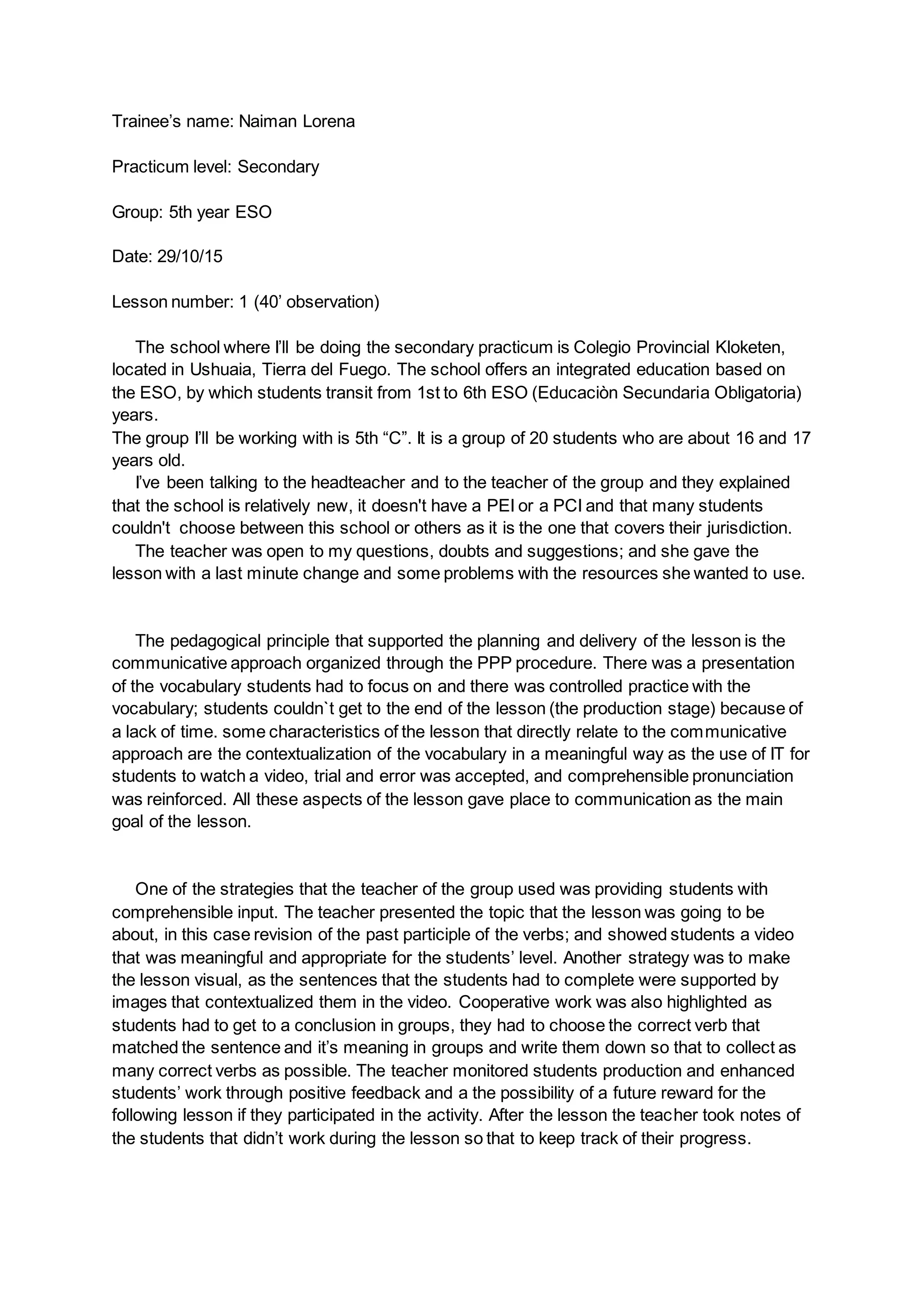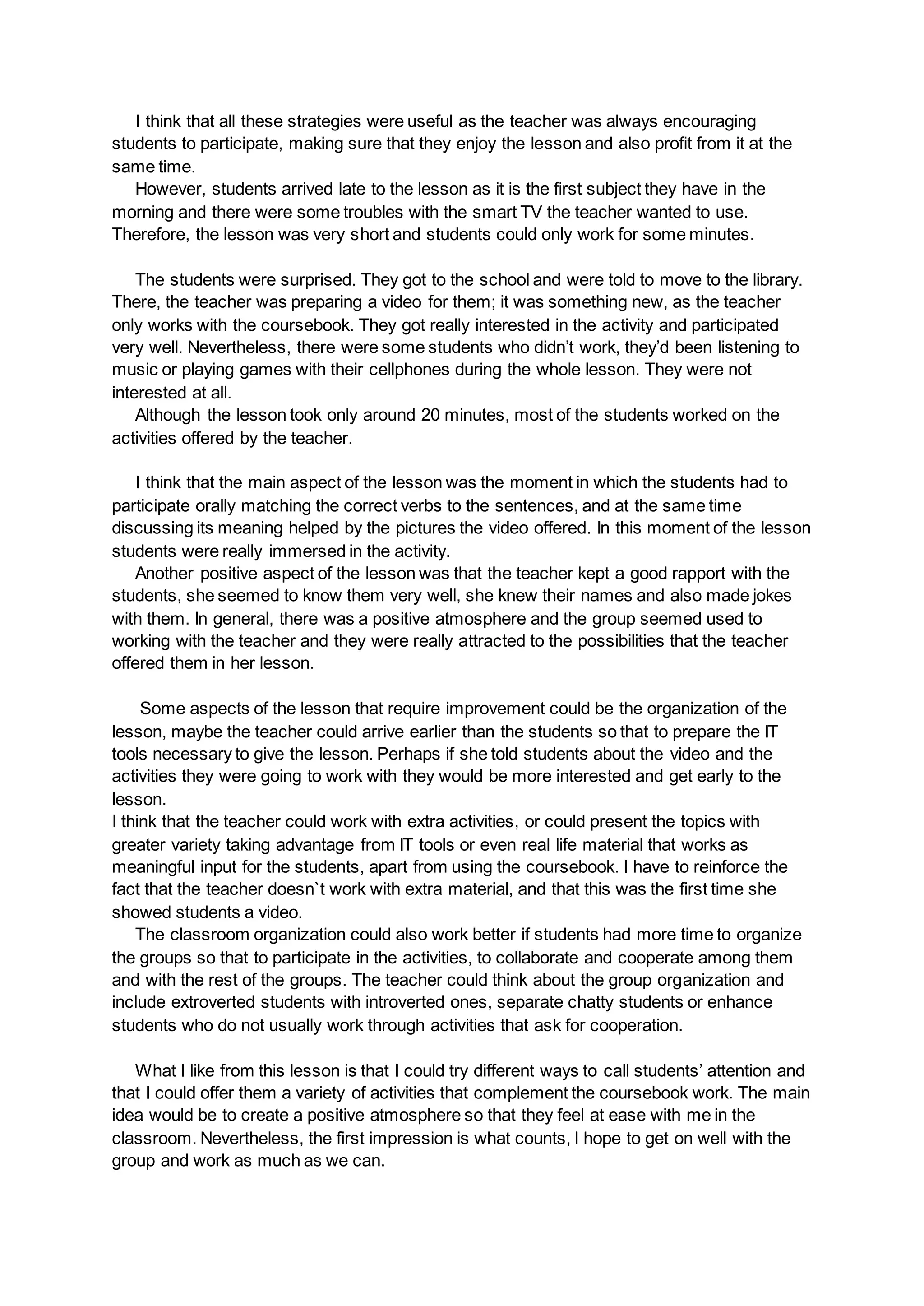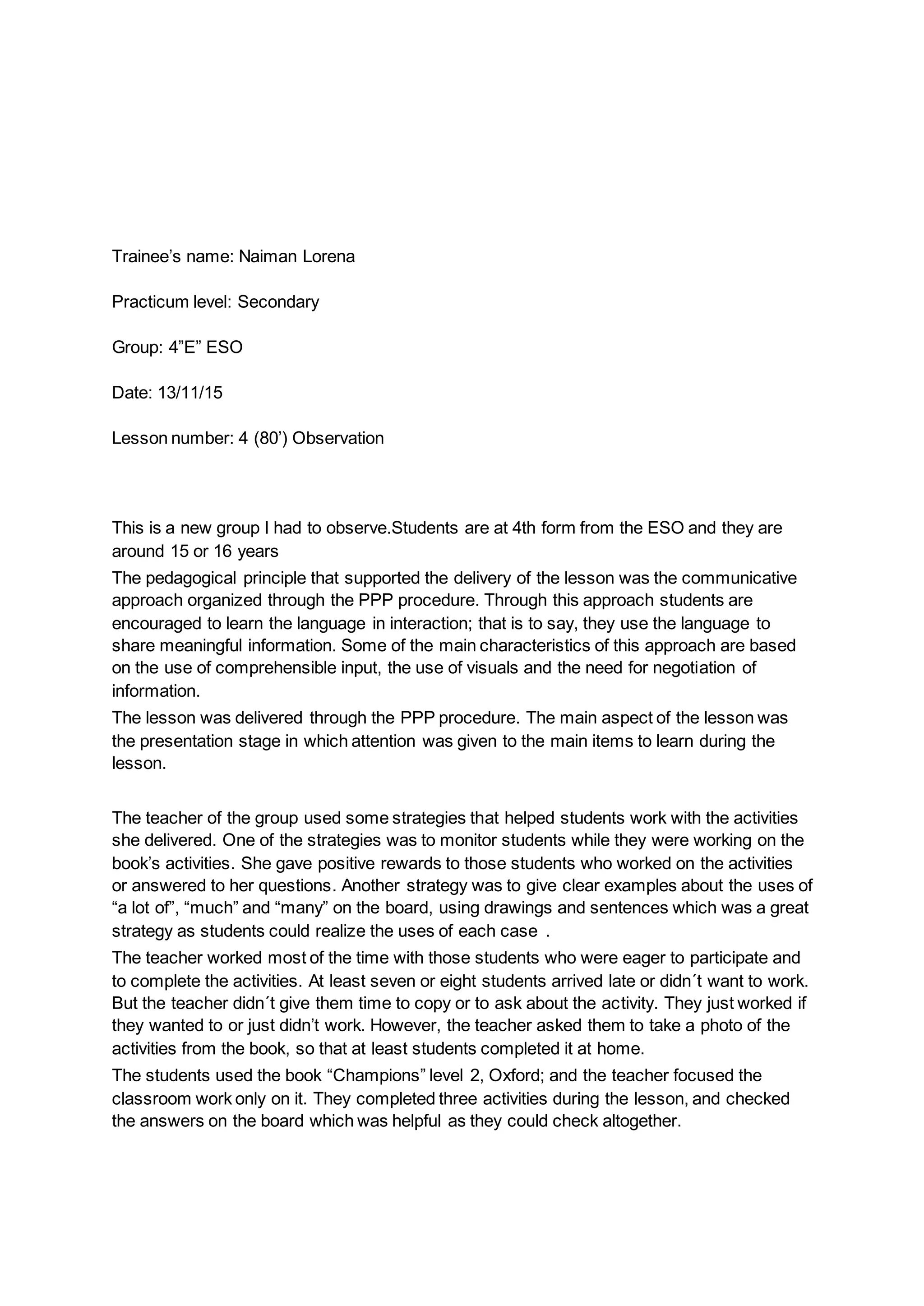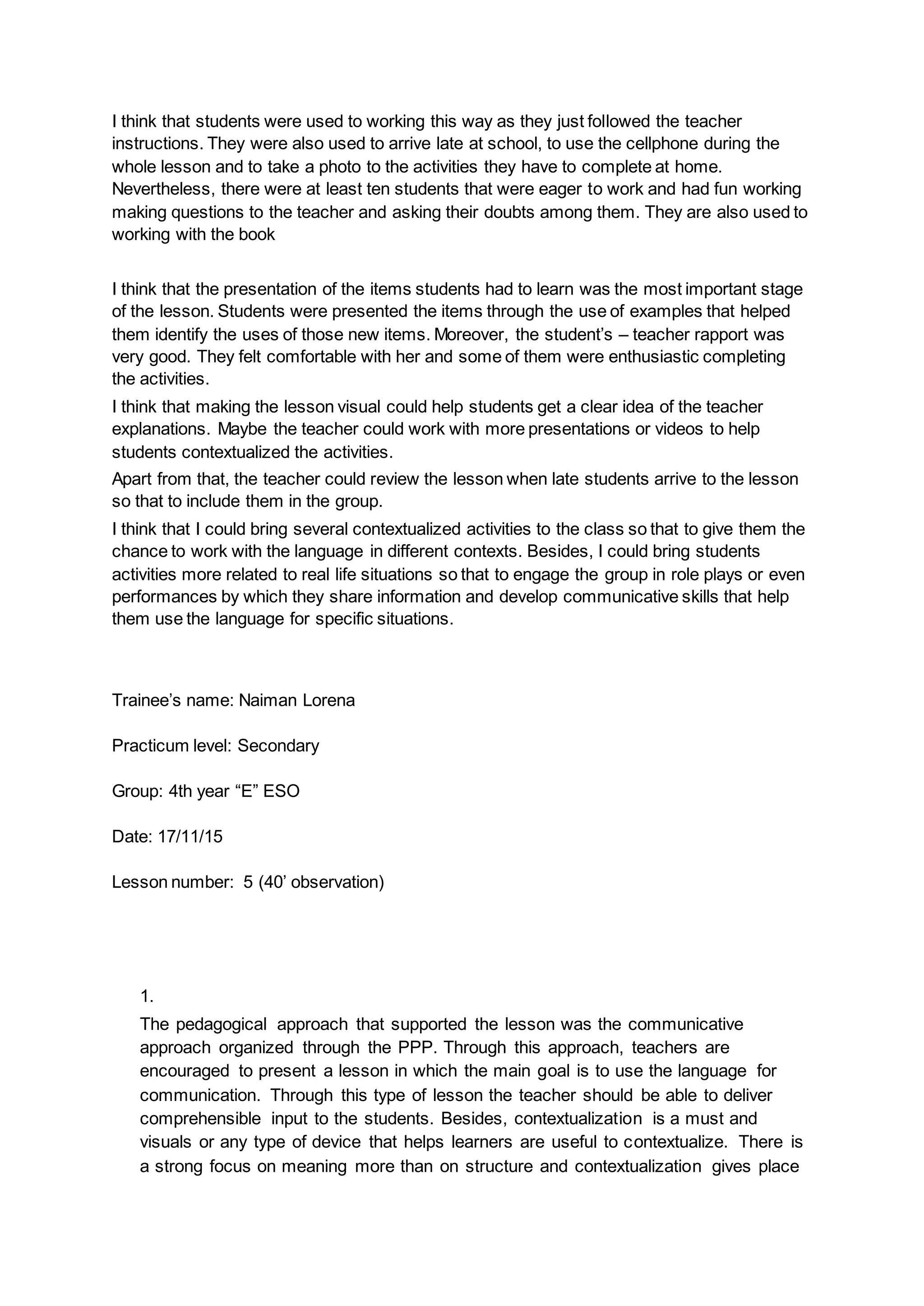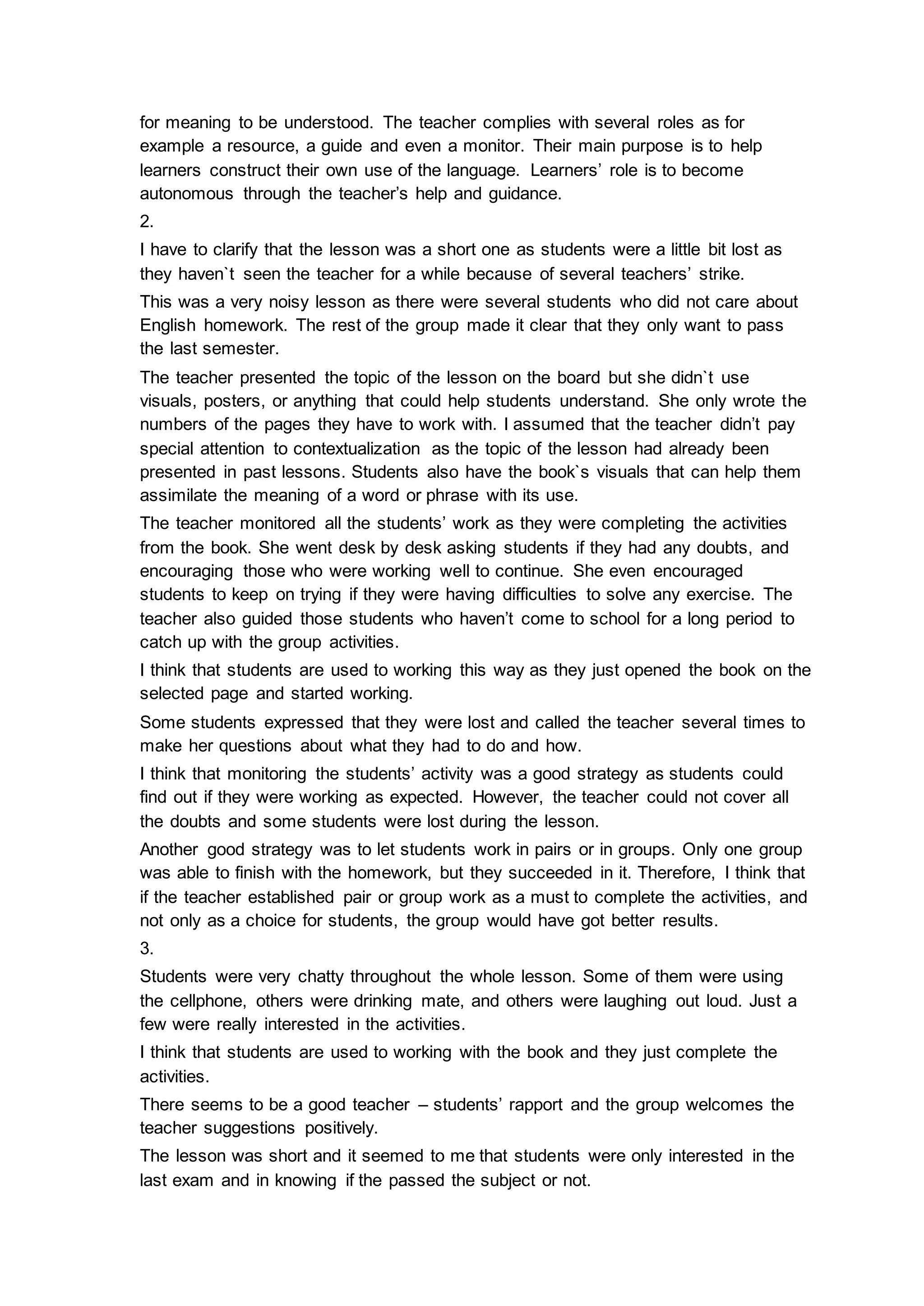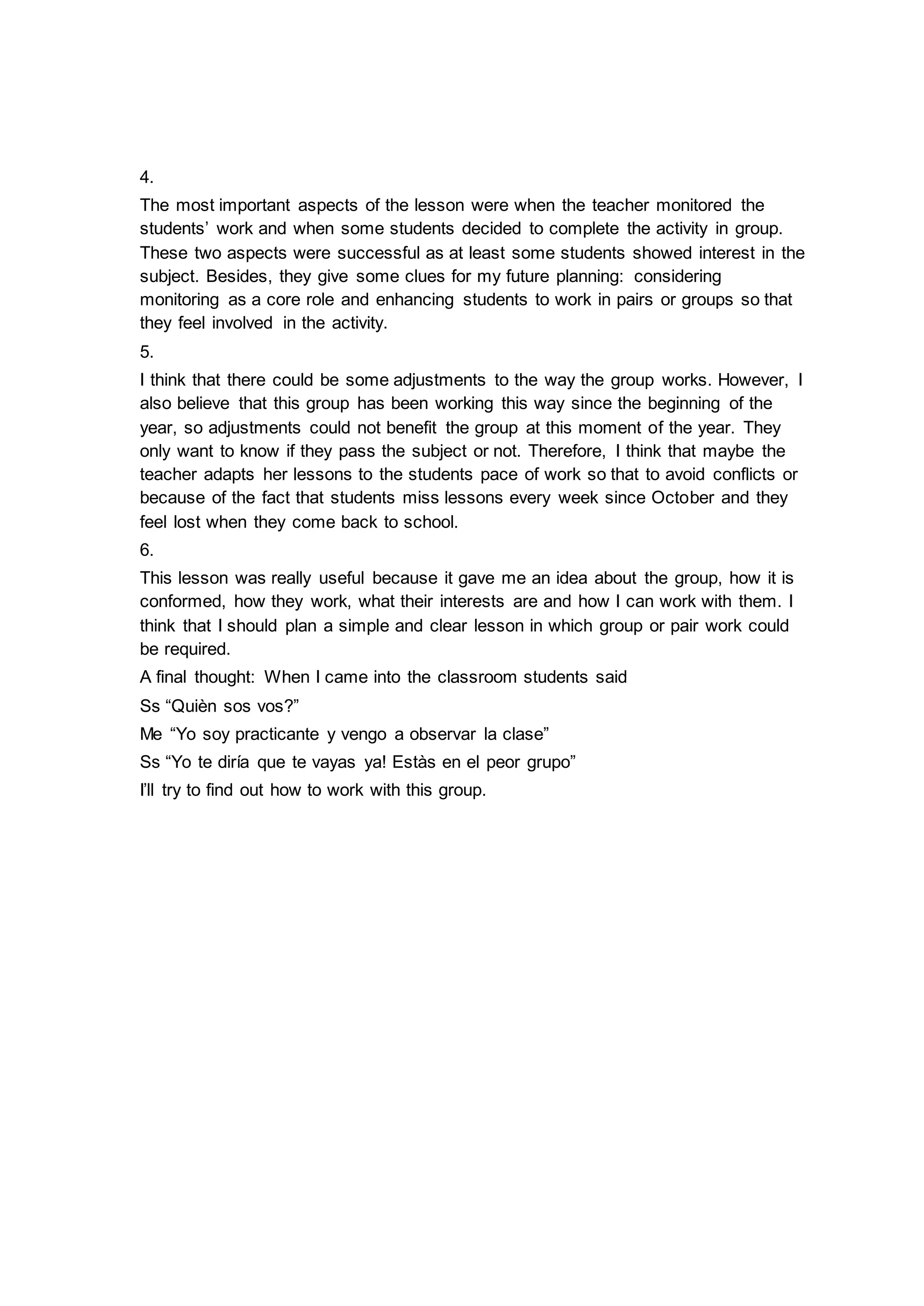The document describes the practicum experiences of a trainee teacher, Naiman Lorena, during observations of various English lessons at Colegio Provincial Kloketen in Ushuaia. The lessons focused on the communicative approach, emphasizing interaction and comprehensible input, though challenges like students arriving late and distractions were noted. Suggestions for improvements include better lesson organization, increased use of visuals, and fostering greater student cooperation and engagement.
